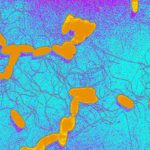Link to Pubmed [PMID] – 25799400
PLoS ONE 2015;10(3):e0120275
BACKGROUND: Although rotavirus is the leading cause of severe diarrhea among children in sub-Saharan Africa, better knowledge of circulating enteric pathogenic bacteria and their antimicrobial resistance is crucial for prevention and treatment strategies.
METHODOLOGY/PRINCIPAL FINDINGS: As a part of rotavirus gastroenteritis surveillance in Maradi, Niger, we performed stool culture on a sub-population of children under 5 with moderate-to-severe diarrhea between April 2010 and March 2012. Campylobacter, Shigella and Salmonella were sought with conventional culture and biochemical methods. Shigella and Salmonella were serotyped by slide agglutination. Enteropathogenic Escherichia coli (EPEC) were screened by slide agglutination with EPEC O-typing antisera and confirmed by detection of virulence genes. Antimicrobial susceptibility was determined by disk diffusion. We enrolled 4020 children, including 230 with bloody diarrhea. At least one pathogenic bacterium was found in 28.0% of children with watery diarrhea and 42.2% with bloody diarrhea. Mixed infections were found in 10.3% of children. EPEC, Salmonella and Campylobacter spp. were similarly frequent in children with watery diarrhea (11.1%, 9.2% and 11.4% respectively) and Shigella spp. were the most frequent among children with bloody diarrhea (22.1%). The most frequent Shigella serogroup was S. flexneri (69/122, 56.5%). The most frequent Salmonella serotypes were Typhimurimum (71/355, 20.0%), Enteritidis (56/355, 15.8%) and Corvallis (46/355, 13.0%). The majority of putative EPEC isolates was confirmed to be EPEC (90/111, 81.1%). More than half of all Enterobacteriaceae were resistant to amoxicillin and co-trimoxazole. Around 13% (46/360) Salmonella exhibited an extended-spectrum beta-lactamase phenotype.
CONCLUSIONS: This study provides updated information on enteric bacteria diversity and antibiotic resistance in the Sahel region, where such data are scarce. Whether they are or not the causative agent of diarrhea, bacterial infections and their antibiotic resistance profiles should be closely monitored in countries like Niger where childhood malnutrition pre-disposes to severe and invasive infections.

